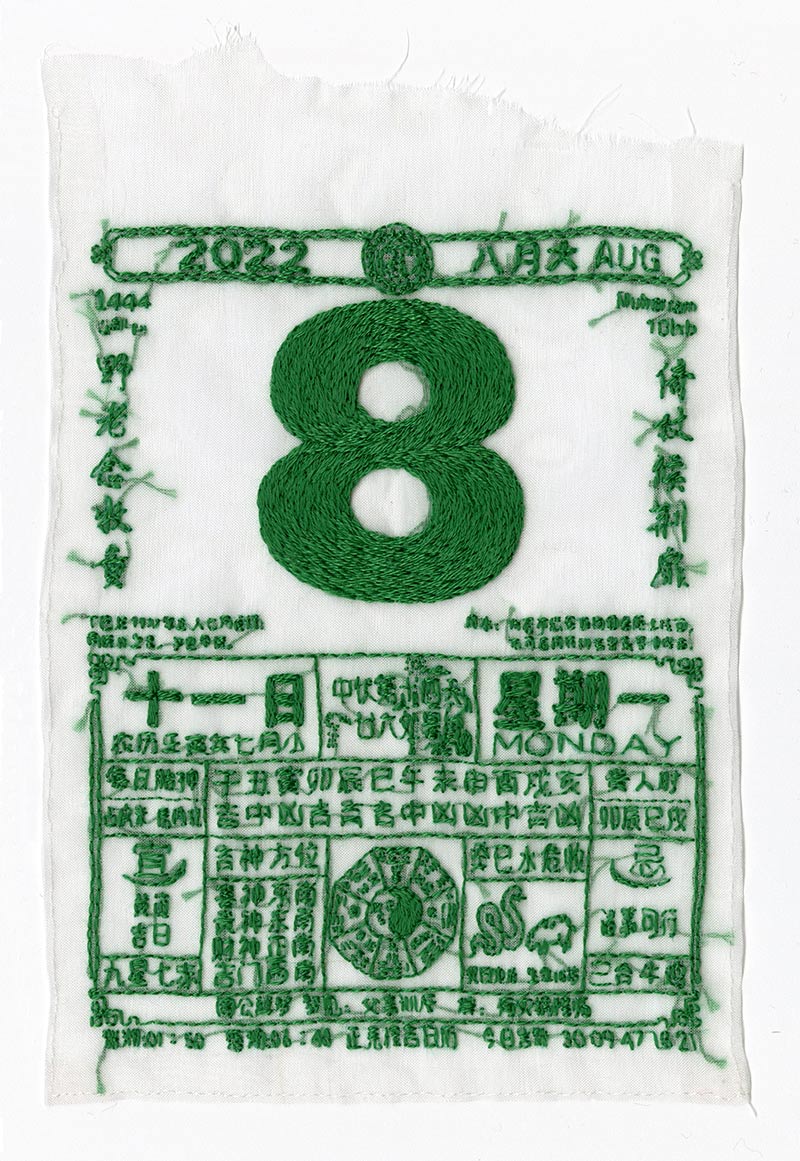Description
‘8822’ by Jessica So Ren Tang
Artist: Jessica So Ren Tang
Title: ‘8822’
Medium: Hand embroidery on organza
Dimensions: 6″ x 4.25″
Framing: Unframed
Year of Creation: 2022
About the Artwork:
The number 4 is considered an unlucky number in Chinese because it similar to the word death. Conversely, auspicious number 8 sounds like “?” which means “to prosper”. Growing up Asian American, the Chinese calendar was a common household item that not only indicated the date but also included (but not limited to) the lunar calendar date, astrology, zodiac signs to watch out for, lucky and unlucky times of the day, etc. Each page was either entirely green or red, with red symbolizing for good fortune and green for health and harmony.
About the Artist:
(Artist Bio)
Born and raised in San Francisco, Jessica So Ren Tang received her BA in Studio Art at mills College in Oakland in 2013. Inspired by her identity as a Chinese American woman, she creates embroideries that reference Asian patterns and objects from her childhood.
(Artist Statement)
Embroidery is versatile in mimicking the original object in shape and design but still distinct enough to be recognized as something else. The stitches are soft but substantial, more tangible.
With embroidery, I explore my Asian-American born identity-the dualism of being too Asian to be American, and too American to be Asian.
In my object series, I recreate familiar Asian American objects that take on the visual identity of the original object but reject said identity due to its material.
In my girl series, I replace the facial identity of suggestively posed Asian women with Asian textile patterns. The patterned skin creates a broader spectrum of Asian identity; it becomes more ambiguous and fluid as identity moves between the two.

